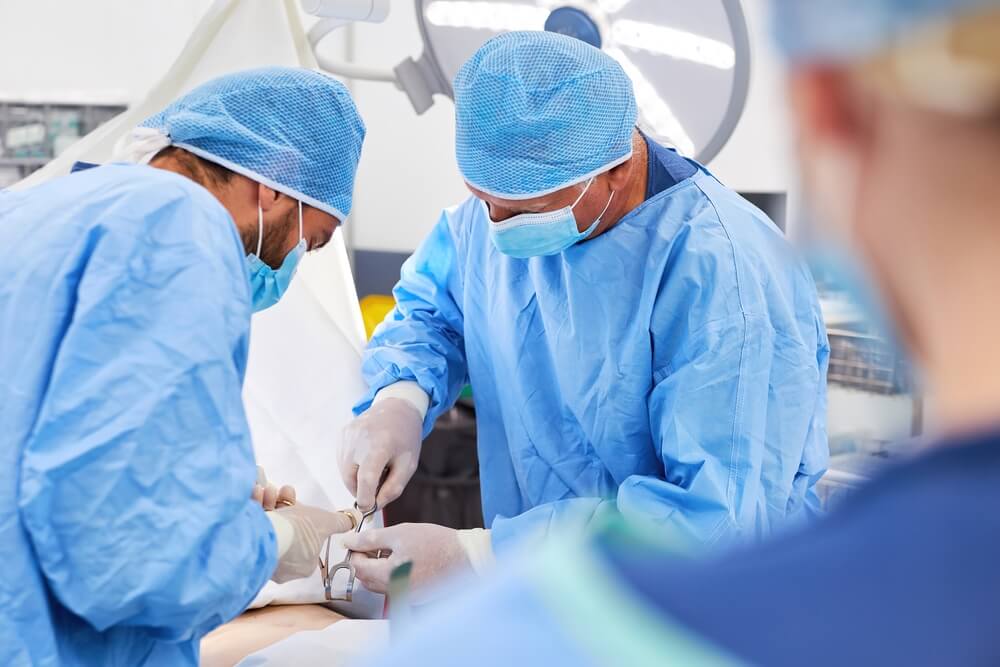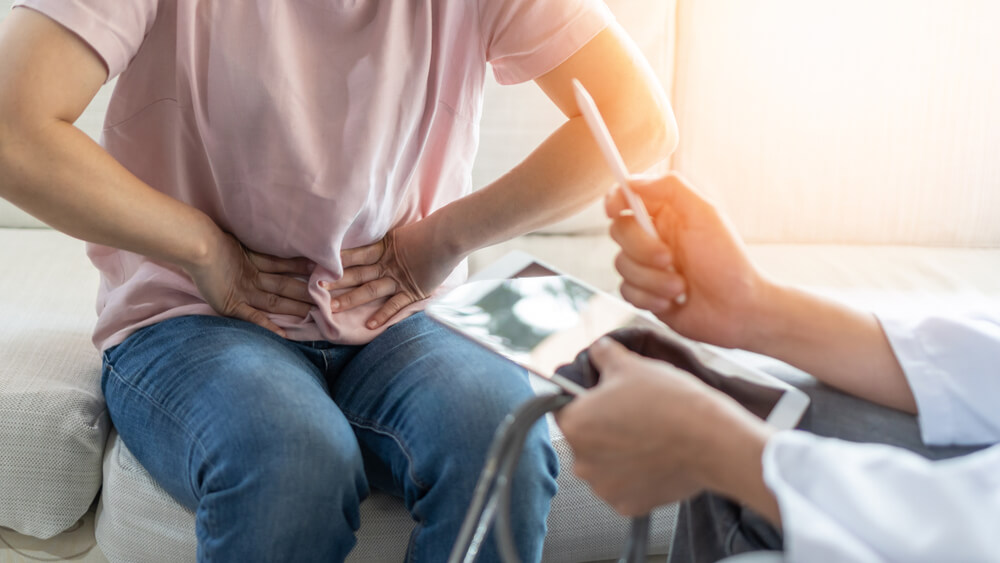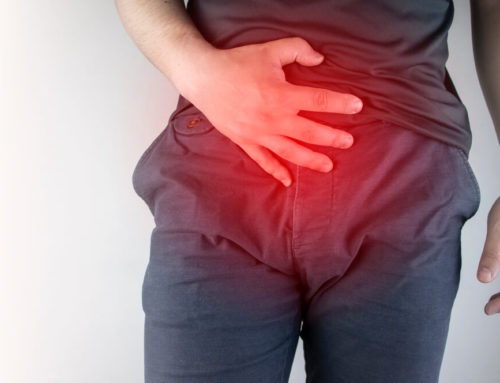If you are experiencing tenderness or abdominal pain, you may have an epigastric hernia. But what is this condition, and how serious is it? We have gathered expert-approved facts on epigastric hernia, including the signs, symptoms, diagnosis, and treatment options. If you are looking to learn more about this condition and the possible treatments available, this is the perfect article.
Nevertheless, before self-diagnosing this condition, consult a healthcare professional. A specialist will help you with any questions or concerns related to your health and the best hernia treatment.
If that sounds good, here are the must-know facts.
What is an Epigastric Hernia?
You may be dealing with this condition if you notice a lump above your belly button. But what exactly does this term refer to?
In short, a hernia is a bulge that appears due to bodily tissue pushing through the patient’s surrounding muscle. Most hernias happen in the abdomen, including the epigastric hernia.
Patients with epigastric hernias have a bulge or a lump that appears in the abdominal wall’s upper part. This area of the abdominal wall is called the epigastrium, and it is located below the breastbone and above the person’s navel.
A lump above the belly button may be evident from birth. The size of the epigastric hernias can vary, and the number of lumps can range from single to multiple.
In most cases, patients with this condition have lumps or bumps that are small in size. Usually, only the abdomen lining breaks through the surrounding tissue. However, when the patient has a larger hernia, it can cause part of the stomach or fatty tissue to push through.
Overall, a small bump or lump above the belly button is harmless. Epigastric hernias may appear occasionally, and they may be invisible when the person is lying down. In fact, a lot of patients remain undiagnosed with an epigastric hernia.
What are the Symptoms of Epigastric Hernia?

The most obvious sign that a patient may have this medical condition is the lump or the bump below the sternum (the breastbone) and above the belly button. A mass of fatty tissue that pushes through the hernia causes a visible lump or bump.
This raised area can disappear when the person is lying down. In some scenarios, the lump above the belly button is always visible or when the person sneezes, laughs, or coughs.
Usually, there is a lack of epigastric hernia symptoms. Many patients remain unaware that they may be dealing with this condition. If you or a family member have any doubts related to this condition, consult a healthcare professional for expert advice and treatment. Your doctor will ask you for epigastric hernia symptoms. In some cases, you may experience pain and tenderness in the epigastric region. These symptoms may worsen when crying, straining, or having a bowel movement. We recommend talking to your doctor if you feel any pain or discomfort.
Epigastric Hernia Symptoms and When to Worry
As mentioned, there is usually no cause for concern, and most patients do not experience debilitating symptoms. However, if you experience abdominal pain, fevers, and vomiting, talk to your healthcare provider immediately.
Patients with untreated cases of epigastric hernia may experience:
- Bowel blockage
- Onset or an increase of tenderness or pain
- An enlarged hernia
- Domain loss (the hernia can become abnormally large, making repair almost impossible)
Causes of Epigastric Hernia
The exact causes of a hernia by the rib cage remain unknown. In most cases, this condition occurs when the abdominal wall tissues do not close entirely during development. However, more research is required to determine the rib cage’s exact causes of a hernia. Currently, the research on epigastric hernias is scarce.
That said, some possible causes include:
- Pregnancy
- Heavy lifting
- Coughing fits
- Obesity
- Physical labor
- Intense sports or training
What are the Epigastric Hernia Treatment Options?
If you are diagnosed with this hernia type, you will require the assistance of a professional. Unfortunately, not reaching out for help and avoiding treatment will create unnecessary complications. Eventually, you may need to undergo a surgical procedure.
The best and only way to treat an epigastric hernia is surgery. Due to the increased risk of dealing with an enlarged hernia and other complications (including pain), surgery is the only viable option. Healthcare professionals recommend surgery for patients of all ages, including infants.
In order to complete the epigastric hernia repair, patients may only require sutures. On the flip side, others may need an implanted mesh. Whether the patient needs sutures or a mesh will vary according to the hernia’s size and other factors. Discuss your options with your doctor.
Your doctor will diagnose you with an epigastric hernia during a physical examination. Firstly, the expert will take your medical and family history and a list of your symptoms. The professional will also press on your abdomen, and you may be requested to lie, sit, or stand in different positions.
A hernia by the rib cage is also diagnosed with the use of imaging techniques such as an abdominal ultrasound or a CT scan. Sometimes, an epigastric hernia is diagnosed as an incarcerated hernia. For reference, when the hernia remains in the “out” position, it is an incarcerated hernia.
Surgery: What Can You Expect?

Since an epigastric hernia does not go away without medical assistance, you will need to consult a professional and get started with treatment. By repairing your hernia, the symptoms will be alleviated, and the chances of complications will decrease.
Before surgery, you will undergo a pre-admission assessment. These tests include:
- A chest X-ray
- Blood tests
- A cardiogram
In some cases, the doctor will ask patients to lose weight (if obese) or quit nicotine use prior to surgery. This surgery can be carried out on either an outpatient or inpatient basis.
During the day of the surgery, the expert will give the patient a local or general anesthetic. This will depend on the patient’s preference, as well as the advice of the expert.
Once the anesthetic becomes effective, the surgeon will start the procedure by making a cut in the hernia. Next, he or she will insert a laparoscope to check the hernia and the abdominal organs. Next, the surgeon will make another cut to move the hernia sac to its proper position. Moreover, the muscle of the abdominal wall will be strengthened.
After surgery, patients may experience some discomfort, swelling, and light pain in the abdominal area. This is completely normal and expected to go away after the first 48 hours. Finally, the surgeon will use dissolvable stitches to close the wound. Make sure to keep yourself hydrated by drinking plenty of water and consuming water and fiber-rich fruits and vegetables.
Post-surgery, patients should be careful when:
- Crying
- Sneezing
- Coughing
- Vomiting
- Passing bowel movements
- Switching positions
That said, if you experience any of the following rare complications post-surgery, consult your doctor right away. These include:
- Vomiting
- Increased redness, pain, or swelling around your wound
- Discharge from the wound
- Persistent bleeding
Overall, it is crucial to choose highly-trained professionals at a reliable and safe clinic. Make sure to prioritize your health.
If you are looking for the best experts in the field, we are here to help you. Book a schedule with us today to get started.







